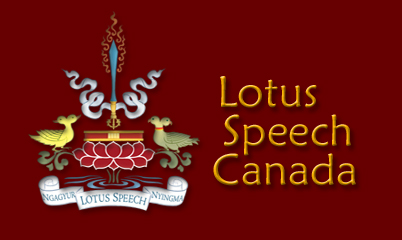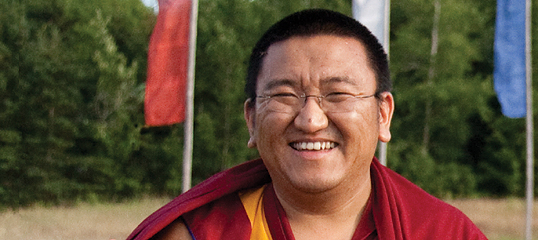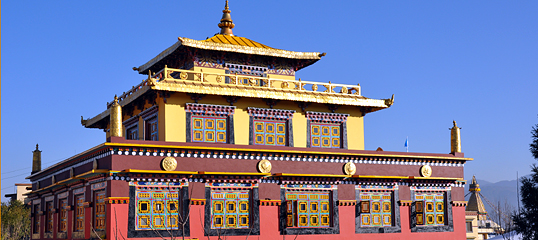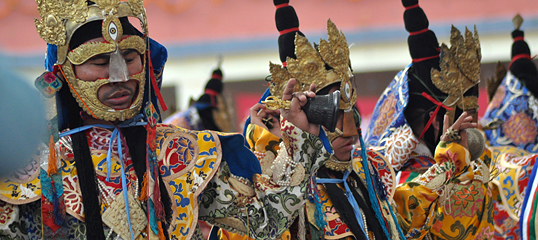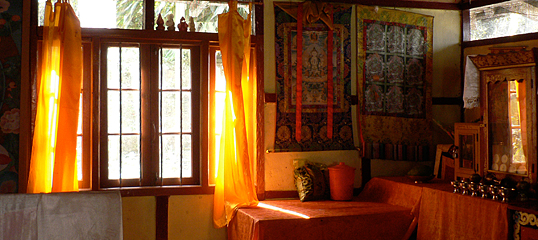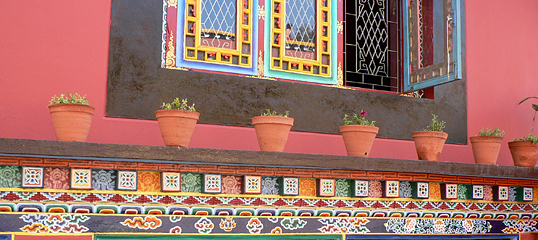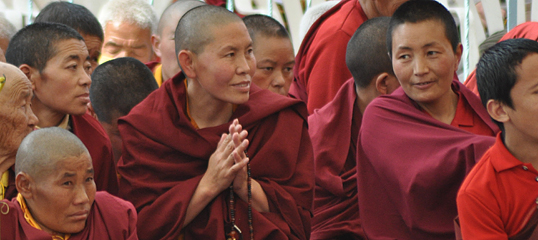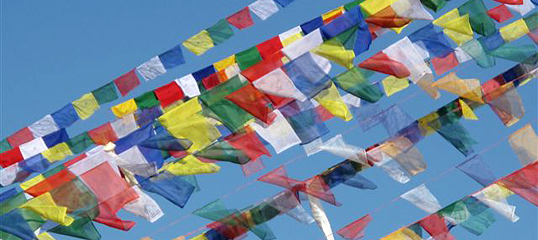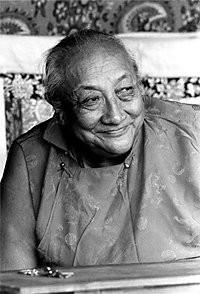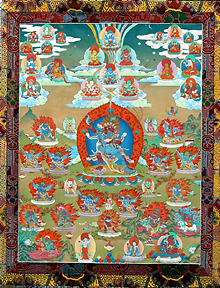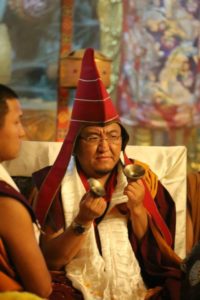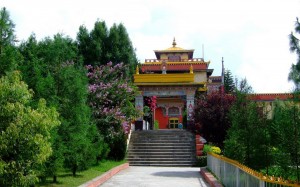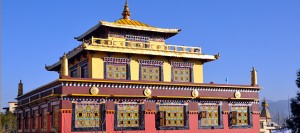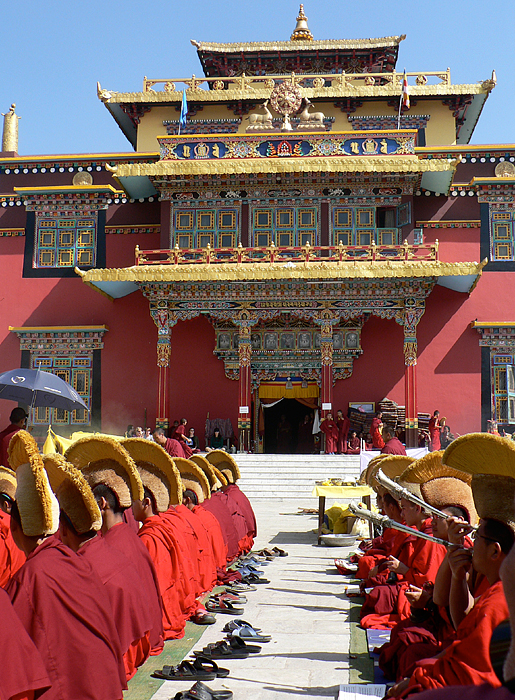Dilgo Khysentse Rinpoche’s Treasures & Teachings
Dilgo Khyentse Rinpoche was Changling Rinpoche’s teacher. Changling Rinpoche has said that when he teaches “the words come directly from the dharmakaya of HH Dilgo Khyentse Rinpoche.”
During Dilgo Khyentse Rinpoche’s life he revealed many profound treasure teachings hidden by Guru Padmasmabhava and destined for fortunate practitioners in these present times.
Of this vast array of treasures, one practice was brought to Lotus Speech Canada students by Dilgo Khyentse Yangsi Rinpoche, the young incarnation of Dilgo Khyentse Rinpoche, when he visited Vancouver in 2010: The Rangjung Peme Nyingtik the Heart Essence of the Self-Born Lotus.
The Rangjung Peme Nyingtik is a terma – an inner discovery of hidden wisdom concealed by Guru Padmasambhava and intended for future generations of disciples. It was revealed to Dilgo Khyentse Rinpoche in a vision while he was in Tibet with his teacher, Jamyang Khyentse Chökyi Lodro. This terma is particularly profound in that it includes the guru, yidam and dakini all within one sadhana.
The Story of the Rangjung Peme Nyingtik
The following inspiring story behind the discovery of this cycle of teachings, the Rangjung Pema Nyingthik, is a fascinating account related by Shechen Rabjam Rinpoche, grandson of Dilgo Khyentse Rinpoche.
When in retreat, Dilgo Khyentse Rinpoche always recited a prayer based on the Eight Herukas. When he was twenty-one years old, he awoke one morning and perceived his body as the yidam, with the eight herukas abiding in various regions of his body. This experience remained with him for a long time.
Later, when he traveled to Dzongsar Monastery to receive teachings from his teacher, Jamyang Khyentse Chökyi Lodro, a group of people asked Dilgo Khyentse Rinpoche for the transmission of the Seven Chapters’ Supplication to Guru Rinpoche. As he read the transmission all phenomena changed and the environment became that of Samye during the time of Guru Rinpoche. Different forms of Guru Rinpoche showered down on him in various sizes and dissolved into him. This brought back visionary experiences and suddenly the text and practice of the three roots appeared clearly and completely in his mind.
Dilgo Khyentse Rinpoche wrote it down and offered it to Chökyi Lodro, who noted that the wording resembled that used in ancient terma. He recognized that this practice was meant to have been revealed by Jamyang Khyentse Wangpo, but as circumstances had prevented that, it then came to Dilgo Khyentse Rinpoche.
During the Cultural Revolution a student hid the text in a cave to protect it but a fire that burned out of control destroyed the original text.
Many years later, with Kyabje Trulshik Rinpoche, Dilgo Khyentse Rinpoche visited Yanglesho, the sacred cave of Guru Rinpoche in Nepal, where he performed a ganachakra offering. He had the sudden realization that he had often seen this cave in his dreams as a child. Trulshik Rinpoche prostrated and requested him to write down what appeared in his mind. On this occasion he again wrote down the Rangjung Pema Nyingthik. Years after this, a monk from Surmong provided some of the texts he had copied from the originals in Tibet before they were destroyed by fire, and the wording was nearly identical to what was written in Nepal.
Rinpoche gave the empowerment, reading transmission and commentary of this terma cycle to his close students. Now we have the opportunity to enter into the enlightened vision of this sadhana and transform our lives.
The Practice of Rangjung Padma’i Nyingthig
The Rangjung Padma’i Nyingthig, a profound mind treasure revealed by Kyabje Dilgo Khyentse Rinpoche, and entrusted to his heart son Kyabje Trulshig Rinpoche, is a complete cycle of practice in which the practices of guru, yidam, dakini and protectors converge and are practiced in the self-same mandala of the Guru as Guru Padmasambhava.
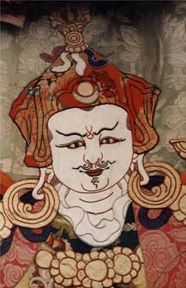
Padmasambhava
It is not necessary to look elsewhere to find the individual practices of the three roots, of guru, the root of blessings, yidam, the root of accomplishment, and dakini, the root of activity.
Within this mandala and practice of the Rangjung Padma’i Nyingthig are the devotional practices of the accomplishment of the guru, who arises in the form of Guru Orgyen Dorje Chang, Padmasambhava himself, embodiment of all the buddhas of the three times.
The Guru also arises in the form of the five families of Padma Thotrengtsal, and as the the eight manifestations of Guru Rinpoche: Padmakara, Padma Gyalpo, Loden Chogtse, Shakya Senge, Padmasambhava, Senge Dradok, and Dorje Drolo.
Within this same body mandala are the individual practices to accomplish the guru as the yidam, the Eight Herukas of the mahayogatantra: Yamantaka, Hyagriva, Vissudhe, Amritakundali, Kilaya, Ekajati, Jigten Choto, and DragNgak and all Eight Herukas practiced together.
In this same mandala, the guru is accomplished as the dakini.
Throughout this practice, development and completion stages are not separate, but practiced together as one.
No matter which part of this vast practice the practitioner concentrates on sequentially, the root of all practice is the accomplishment of the Guru, and the knowledge and certainty that all the deities arising and practiced are none other than the wisdom mind of the guru, inseparable from the practitioner’s own mind.
The basis of this practice is devotion and constant confident faith in the guru as Guru Padmasambhava; the path is the practice of the guru; the result is the accomplishment of the guru’s wisdom mind, the essence of the mind of all the buddhas of the three times.
The Rangjung Padma’i Nyingthig can be practiced as simply, or as richly, in retreat or as a daily practice, as the practitioner wishes, for this practice is a sole practice of the accomplishment and realization of the guru, Guru Padmasambhava, the source of the three roots, and in whom the three roots converge.
It is no wonder, then, that there are many amongst the senior students of Kyabje Dilgo Khyentse Rinpoche who have made this practice their daily practice. Fortunate indeed are those who practice this!
– written by a western student of Kyabje Dilgo Khyentse Rinpoche.

